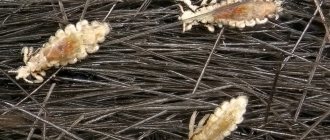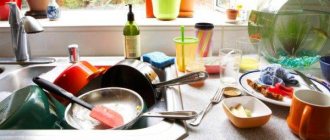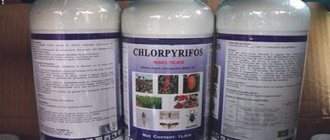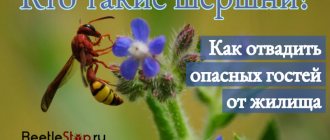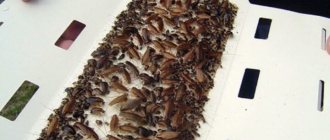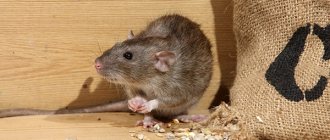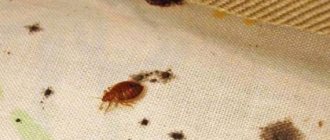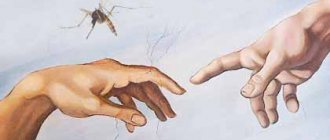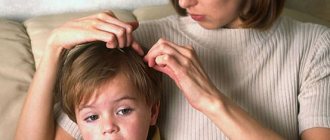Pediculosis is a disease that is transmitted only from person to person. There are several myths about how lice are transmitted. For example, you can get lice from pets. Or that lice appear on your head if you don’t wash it for a long time. In fact, there are several ways of transmitting head lice. But all of them are in one way or another connected with close contacts or the use of personal belongings of an infected person. A more complex and less likely way of becoming infected with lice is when these insects land on the scalp or body of a person from water or any surfaces where they could remain after being infected.
What you need to know about lice
A louse is a blood-sucking parasite that lives only on the human body and feeds on its blood. Human lice do not live on animals and cannot get onto the human body from pets.
There are three types of lice that are parasites of humans:
- head;
- clothes;
- pubic.
The first live on the head and this is the most common species. The favorite habitats of parasites on the head are the back of the head and temples, the shaft of the hair. The latter live outside the human body and come to it only for food. The rest of the time they hide in clothes, home textiles, and furniture. The third type affects the hairy parts of the body near the genitals and anus.
The routes of infection for these three types of parasites are somewhat different. Thus, head lice are transmitted by touching heads, using hats or hair accessories. Body lice - when using clothing and other things where they can hide. Pubic lice - through sexual contact, staying in the same bed, using contaminated underwear or towels.
One louse that gets on the human body may not cause head lice. The life cycle of the parasite is about 40 days. If it turns out to be a male or an unfertilized female, the insect will simply live out its life without leaving any descendants. But if it is a fertilized female, then she will lay an average of four nits per day and multiply exponentially. Within 2–3 weeks your head will be swarming with parasites.
Provoking factors and development of pathology
A louse is a small arthropod parasite that moves quickly and cannot fly. Its length reaches 5 mm, and its life cycle is about 40 days. Settling on human skin, lice feed on blood and lay eggs (nits) in the hair or clothing of their owner.
Various types of lice can live on animals - monkeys, horses, dogs, pigs. Three types of lice are dangerous to humans:
- pediculus humanus capitis (head);
- rhthirus pubis (clothes);
- humanus vestimenti (pubic).
Lice live only on the host, they quickly move from the body to clothes, underwear and hygiene items, but in need of food, they quickly find a new host and lay their eggs in the behind-the-ear or occipital area of the head (from five per day). The larvae also feed on blood. The appearance of lice causes severe itching and a local burning sensation. Constantly scratching bite sites can provoke secondary inflammatory processes.
The incubation period varies. In most cases, the parasite enters the hair or skin in its mature form, immediately starting to feed on blood, causing severe irritation. In rare cases, the onset of the disease may be hidden for the first 14 days.
Carriers of lice, or otherwise suffering from lice, are contagious. The main methods of infection are contact and household (through household items, clothing, bedding). In large crowded groups, lice spread quickly. This applies primarily to children's groups - summer camps, kindergartens, boarding schools, schools, sports sections.
The opinion that lice is a feature of asocial strata of society and underdeveloped societies has long been refuted. This disease affects adults and, more often, children, including those in quite prosperous families and social circles.
There are factors that contribute to the spread of head lice. Protection against lice will be more effective if you know these conditions and be extremely careful when they exist. The following risk factors can be identified:
- Favorable periods for outbreaks of pediculosis are wars, relocations, social conflicts, when the level of public sanitation and personal hygiene decreases.
- Lice easily spread in places where hygienic conditions are not sufficiently met - infrequent changes of linen, lack of treatment of upholstered furniture and outerwear lead to infection.
Pediculosis is not a seasonal disease; you can get it at any time of the year.- Although lice do not live long without a person, they can wait for a new owner in the folds of linen or clothing for up to several days; nit eggs are stored in things and can withstand heat treatment.
- The louse prefers clean skin and hair, which makes it easier to drink blood. Chemical hair styling and coloring products can repel it.
- The thinner and more delicate the skin, the more attractive it is to lice. Therefore, children are more likely to become infected with lice than adults.
- The louse is almost impossible to see - it is practically invisible in the hairline. The main symptom of the disease is nits - insect eggs firmly attached to the hair or clothing pile. They do not change position when the hair moves and are whitish or yellowish in color.
Ways of infection with pediculosis
There are several ways in which lice are transmitted from person to person:
- contact;
- through clothing and care items;
- through water;
- through surfaces.
The most common method is through direct contact with a lice-infested person. The least likely, but at the same time real, is through surfaces. It is worth understanding that a louse cannot jump or fly. But she crawls quite quickly, although her legs are not designed to move on smooth surfaces. The structure of lice is such that three pairs of legs help it cling to hairs. In half an hour, an insect can cover about 50 cm, which means it takes time to become infected. With instant contact, you may not become infected with lice. But an infected person can throw off the parasite if he violently shakes his head or his personal belongings near the new host. This is why you need to be careful when entering a new room with a large concentration of strangers.
How to get rid of parasites
In the house
Human lice live either on hair or clothing. Therefore, in order to cleanse the house of these parasites, you do not need to treat all existing surfaces. How to kill lice on things:
- Wash. Lice and nits do not survive high temperatures. Wash all items at a temperature of +60, and the parasites will be exterminated.
- Freezing. Low temperatures are lethal to lice. Leave things in the freezer for a day - after that they will become safe. In winter, if the temperature outside is below +10, a balcony will do instead of a freezer.
- Ironing. Another way to kill lice is using high temperature. However, it requires thoroughness and, therefore, a lot of free time.
- Boiling. Combs, combs, etc. not very convenient to wash. They can be boiled for 15 minutes.
- Chemicals. Not all clothes can be washed at high temperatures. In this case, various chemical solutions will help: Soap and kerosene in equal quantities.
- Karbofos. For every kg of things you will need about 10 g of product.
- Aerosol. It is most convenient to treat bulky items such as mattresses and pillows with an aerosol.
On the hair
Lice have existed on our planet for tens of millions of years. They are so resilient due to their ability to adapt.
Just like many parasites, lice eventually develop immunity to the means with which they are tried to poison them.
But fortunately, there are many remedies, and it is literally impossible to develop immunity to some of them.
Get rid of lice with:
- Insecticides. Specially developed anti-lice products. Safe for skin.
- Household chemicals. Vinegar, kerosene, hydrogen peroxide and some other chemicals can kill lice. But the effect on the skin can be very unpleasant: burns, rashes, etc.
- Special combs. Combs for lice and nits do not cause any adverse reactions, but require careful and regular combing of hair over a long period of time. The following combs have a good reputation: AntiV, RobiComb, LiceGuard. There are also electronic combs, but their effectiveness is not much different from conventional ones, which cannot be said about the price.
- High temperature. There are special hair dryers that can produce a stream of air hot enough to kill lice without damaging the skin. For obvious reasons, such a device is quite difficult to obtain, and its price is quite high.
- Shaving. Removing all hair is the easiest and most reliable way to get rid of lice. However, not the most popular.
Insecticides
Among the insecticidal agents against lice are:
- Special shampoos. They are most popular because they are easy to use and very rarely cause adverse reactions. It is worth highlighting the shampoos “Higia” and “Pedilin”, which, unlike many analogues, are effective not only against lice, but also nits.
- Sprays. They pose a great danger to lice, but at the same time they often irritate the skin. Most often recommended for removing pubic lice. Most sprays have no effect on nits. Therefore, you need to spray your head several times.
- Creams and lotions. They are used to remove pubic lice, since it is problematic to apply them to long and thick hair on the head.
- Folk remedies. They are divided into two groups: killing and repelling lice. The first includes the already mentioned vinegar, hydrogen peroxide, kerosene, etc. The second includes various essential oils, wormwood infusions, tar soap, etc. The first group of products effectively kills insects, but can also severely damage the skin. The second group has a gentle effect on the skin, but only temporarily repels parasites, which means it is ineffective.
Lice and personal hygiene
Contrary to popular belief, lice do not appear on their own on a dirty head. This is a myth, a horror story, used to scare children so that they take care of themselves. Of course, a lice epidemic is more likely where cleanliness is not maintained. In such communities there are fewer opportunities to remove parasites, which means that constant re-infection occurs. An example would be antisocial families, gypsy camps and other types of human society without proper attitude to personal hygiene and without conditions for its maintenance.
Lice feed on blood. To do this, they pierce the skin and suck out a few droplets. It is much easier to do this if the skin and hair are clean and not covered with a layer of fat or dirt. A clean human head is an ideal place for lice. And since children's skin is thinner, it is more attractive to parasites.
Why do lice appear more often in children?
Children's groups are more susceptible to mass infection with head lice. There are several explanations for this.
Firstly , children rarely maintain social distance. It’s normal for them to hug, rest their heads against each other, and put on other people’s things, especially hats. Girls borrow combs and hair accessories from their friends. All this contributes to the fact that lice are transmitted from child to child. The modern craze for gadgets, when children spend a long time hovering over one smartphone or tablet, especially helps the transition of parasites.
Secondly , children may not pay attention to the symptoms of head lice for a long time and not tell adults about them. Some children do not react even to severe itching. During this time, a large number of lice multiply on the child’s head, and the child himself can transmit the parasites to all his friends.
Thirdly , some parents consider lice a normal age-related phenomenon. Everyone gets lice, they think, and don’t even try to remove them. Unfortunately, this happens not only in asocial families, but also in prosperous ones. Other parents believe that this cannot happen to their child, so they don’t even check him for lice. But not a single child attending a kindergarten, school, additional education institution or children's health camp is immune from infection with head lice. Therefore, it is imperative to carefully check your child’s head for lice and nits every couple of weeks.
Contact method
Means that adults crawl from head to head. Pediculosis pubis is also transmitted by contact - through sexual contact or sleeping together. Adults can pick up head lice through contact, for example, on public transport - just stand very close to an infected person for a couple of minutes. You can also catch parasites in any place with a large concentration of people - in a queue, in a cinema, even in a restaurant if the tables are so close that those sitting at them can touch each other's heads. This means that anyone can get lice. This does not depend on the level of hygiene or social status.
Through personal belongings
Lice are transmitted through hats, hair accessories, combs, scarves, and any other things. Body lice is transmitted through clothing, towels, bedding, furniture, even through books and magazines - any soft and loose things in which insects can hide. Body lice often appear in the home when purchasing used items.
Head lice are often contracted in hospitals, hotels, and long-distance trains. This occurs due to insufficient sterilization of bed linen, pillows, and blankets. Parasites die at high temperatures. If bedding has not been properly treated, lice remain in it, which then crawl onto a new host.
Through the water
This is the strangest, it would seem, method of infection, but lice can live in water for 2 - 3 days. They remain viable outside the human body for up to 4 days, and nits can fall into a state of suspended animation and spend up to a month in it, after which they “come to life” when they enter a favorable environment.
You can become infected with lice in natural reservoirs, swimming pools, saunas and baths, showers of sports clubs and other rooms with a humid environment. Massage parlors, beauty salons, hairdressers - establishments where the highest level of hygiene must be maintained, can become a source of lice infection if they neglect to thoroughly clean after each client.
Through surfaces
As mentioned above, a louse can live outside the human body for 2–3 days. This means that you can pick them up anywhere. For example, an infected person could shake off several individuals on a park bench. He left, and a new man sat down on the bench. A louse cannot go without food for a long time, so when it senses a new victim, it will strive to get on it. If a person sits on a bench long enough, an insect can get to him.
You can also catch lice, for example, on the beach. Often the source is public transport, and individual trips with a hired driver on his vehicle are no exception - lice can remain on the headrests of the seats.
Prevention of head lice in children
The most important way to avoid infection is to practice good hygiene. The child should be reminded of this as often as possible. Prevention methods for lice and nits include:
- Washing head. Ideally, this procedure should be performed at least every other day, but at least once a week, using high-quality shampoos.
- Regular change of underwear and bed linen.
- Daily thorough hair care, in particular combing.
- Minimal communication with people who, due to their living conditions, may have parasites.
- Frequent examinations of the scalp in order to timely detect and prevent the development of a large population of insects.
In addition, protection against lice is ensured by using only a personal comb, clothing and care products. Therefore, do not forget to remind your child every day that in a children's group you need to follow the rules of hygiene and not exchange personal items. This will help avoid infection.
Tea tree oil is a good way to prevent lice. By lubricating the back of your head and behind your ears, you can repel insects, as they do not like the smell.
Preventative treatment with shampoos is an ideal method of protecting children from lice; be sure to comb them out with a comb.
How to avoid lice infestation
There is no absolute prevention. Certain precautions can and should be taken:
- do not visit crowded places with low social responsibility and a low level of personal hygiene - they most often carry parasites, not just lice;
- maintain social distance whenever possible, do not touch your head or hair with other people;
- after visiting places where there was a possibility of picking up lice, be sure to take a shower, wash your hair, and thoroughly comb your hair with a comb or comb; You can use anti-lice products - shampoo, spray;
- regularly inspect children's heads for lice and their eggs;
- do not use other people's personal belongings;
- If you have to use used items that may have body lice on them, wash them at temperatures above 40 degrees, iron them or treat them with a steam generator.
If you can’t protect yourself from lice, you need to start fighting when the first symptoms appear. Modern anti-pediculosis agents allow you to get rid of lice in 1 – 2 applications. We recommend products from MediLis: BIO, Malathion, Permifen, Super. They are suitable for adults and children over 5 years old. The instructions must be strictly followed to ensure that the treatment is effective and safe. Treatment should be with enhanced pediculicides, which destroy not only adult lice, but also nits (scientifically speaking, they are ovicidal). Medilis-BIO is specially designed to combat human lice. The solution is applied for about 20-30 minutes, then the disoriented and dead parasites are combed out using a comb. At the end of the procedure, the hair must be rinsed under running water. Products produced by MediLIS Laboratory LLC help get rid of all three types of lice. To completely get rid of parasites, you need to treat not only the head and body, but also clothing, personal belongings, bedding, furniture, floors, etc., because there may be individual individuals on them. If they are not destroyed, they will reappear on the head, causing a new lice infection. For the same reason, when lice appear in one family member, all household members need to be treated for parasites.
Are lice and nits afraid of water?
Parasites are transmitted purely through contact. Therefore, the risk of infection is always present when hugging, touching a sick person, as well as when visiting a bathhouse or swimming pool together. Parasites are not afraid of water and can remain viable in it for up to 2 days at a temperature of +15...170C.
Louse
Moreover, when washing your hair with regular shampoo, it is also impossible to wash off the lice. This is due to the structural features of their body. Parasites are held on the hair by their three pairs of tenacious, strong legs, which provide them with a secure hold.
Also, water does not pose a danger to nits. When laying eggs, the female secretes a special sticky substance that holds them securely on her hair.
